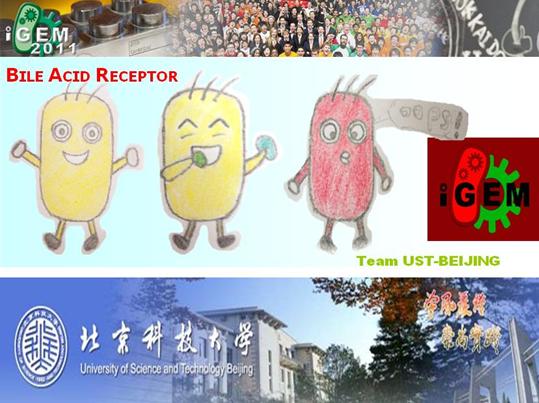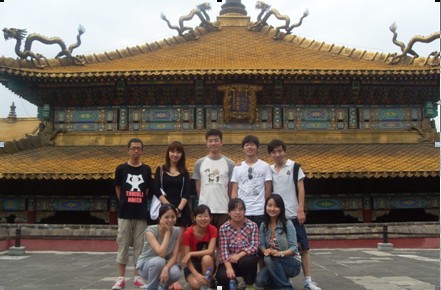Team:UST-Beijing/Project
From 2011.igem.org
(Difference between revisions)
(→Overall project) |
Kehanzhong (Talk | contribs) (→Overall project) |
||
| Line 49: | Line 49: | ||
We are engineering a bile acid sensor in E.coli and others | We are engineering a bile acid sensor in E.coli and others | ||
| + | Using lacI DNA-binding domain and LXRbeta ligand-binding domain, we made an artificial bile acid receptor which can regulate expression of target gene within a natural lacI operon. As proof of principle, we demonstrate that regulation of bacteria gene expression by host eukaryocyte metabolites is achievable using chimeric nuclear receptors. Through directed molecular evolution, a harmonious signal network regulating metabolism of both prokaryocytes and their host eukaryocytes in the digestive tract is feasible. | ||
== Project Details== | == Project Details== | ||
Revision as of 04:53, 27 July 2011
This is a template page. READ THESE INSTRUCTIONS.
You are provided with this team page template with which to start the iGEM season. You may choose to personalize it to fit your team but keep the same "look." Or you may choose to take your team wiki to a different level and design your own wiki. You can find some examples HERE.
You MUST have a team description page, a project abstract, a complete project description, a lab notebook, and a safety page. PLEASE keep all of your pages within your teams namespace.
| You can write a background of your team here. Give us a background of your team, the members, etc. Or tell us more about something of your choosing. | |
|
Tell us more about your project. Give us background. Use this is the abstract of your project. Be descriptive but concise (1-2 paragraphs) | |
| Team Example |
| Home | Team | Official Team Profile | Project | Parts Submitted to the Registry | Modeling | Notebook | Safety | Attributions |
|---|
Contents |
Overall project
We are engineering a bile acid sensor in E.coli and others
Using lacI DNA-binding domain and LXRbeta ligand-binding domain, we made an artificial bile acid receptor which can regulate expression of target gene within a natural lacI operon. As proof of principle, we demonstrate that regulation of bacteria gene expression by host eukaryocyte metabolites is achievable using chimeric nuclear receptors. Through directed molecular evolution, a harmonious signal network regulating metabolism of both prokaryocytes and their host eukaryocytes in the digestive tract is feasible.
 "
"

